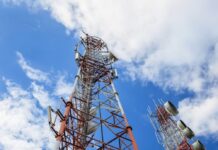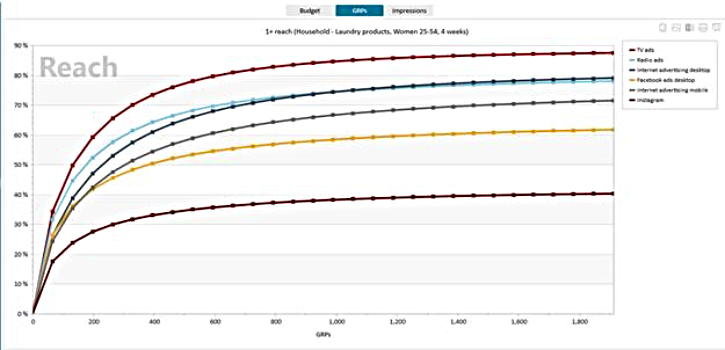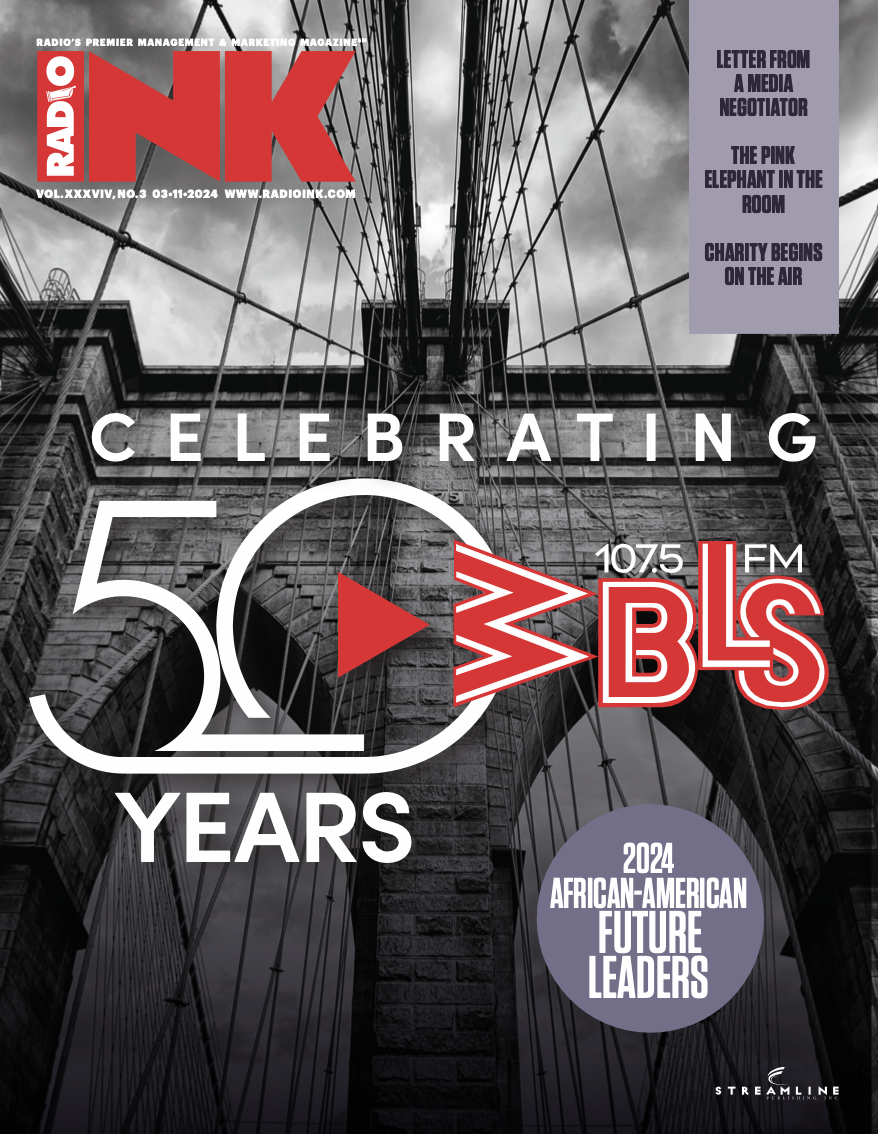
(By Bob McCurdy) I had a conversation with an extremely large national advertiser last week about the best way to maximize radio’s reach. He got me thinking. So what is the best way to schedule radio commercials to quickly generate the greatest reach? Let’s dig down.
We all know radio reaches 97% of U.S. adults monthly, but maximizing reach, while limiting frequency, requires a little more thought than buying a lot of stations with a lot of spots. Budgets, after all, are not unlimited.
There’s Pareto’s Law, which states a small percentage of any product, service, medium, or station accounts for a lot of its consumption which is why the reach curves below, taken from Nielsen’s Commspoint, grow quickly and then flatten out. The “X” axis connotes the GRP level while the “Y” axis connotes the reach. The “reach” point of diminishing returns is easily seen on this chart, so if reach is the main goal, there does come a point when the next ad dollar should be spent on another medium or station. I will try to quantify where that point is on a radio station.
A similar Pareto phenomenon exists in radio, with the chart below being generally reflective of radio stations regardless of format or market:
In this case, 56% of this station’s total listening is done by only 22% of it listeners, while 50% of its listeners accounts for only 15% of its total listening. What this means is that this station’s heaviest listeners, 22% of its audience, would be exposed to about 56% of all commercials airing on this station, while 50% of all listeners will be exposed to only about 15% of all commercials. This makes things a little tricky when trying to maximize overall reach as it would be easy to pile up frequency against the small segment of loyal listeners. It’s in our best interest to identify a protocol to assist here.
An advertiser interested in reach would be better served focusing on reaching this station’s (or any other’s) heaviest (P1) and heavy (P2) listeners, while attempting to reach the light (P3) and lightest (P4+) listeners on other stations, as the light and lightest listeners to this station are likely the heaviest and heavy listeners to another and thus more easily reached.
We need to understand and pay more attention to the role these listening quintiles play in reach-focused campaigns. When the goal is to maximize radio campaign reach and approach the lofty monthly industry reach figure quoted above, consider:
- Ranking stations based on reach, top down.
- Compute each station’s “turnover” (cume/aqh).
- Place a commercial load on the top reach-ranked station that is the equivalent of 40%-50% of that station’s “turnover.” (This figure has been vetted.)
- Move down the ranker doing the same for the #2 ranked reach station, #3, #4, etc., buying as deeply in this manner as the budget allows.
- Use as many dayparts/days as possible.
Reach and frequency formulas typically show that buying a station to its “turnover” results in reaching about 55%-60% of its audience. But as is evident from the Station A chart, this would also mean reaching light and lightest listeners, which would likely result in excessive reach diminishing frequency against Station A’s P1’s. This is why the 40%-50% factor was recommended.
To summarize, this protocol enables an advertiser to effectively reach each station’s heaviest listeners without over-saturating these loyal listeners with campaign reach-limiting frequency, while focusing on reaching the light and lightest listeners on other stations, thus increasing overall campaign reach.
Note: The above “math” is recommended for reach-focused campaigns, not all radio campaigns.








